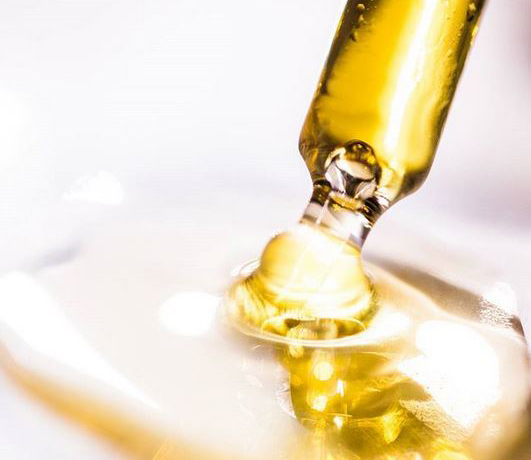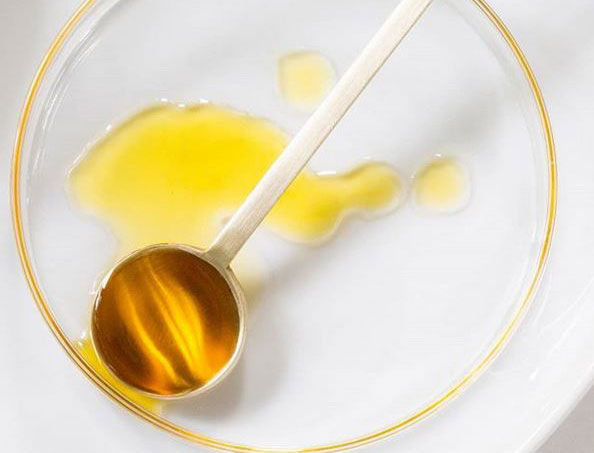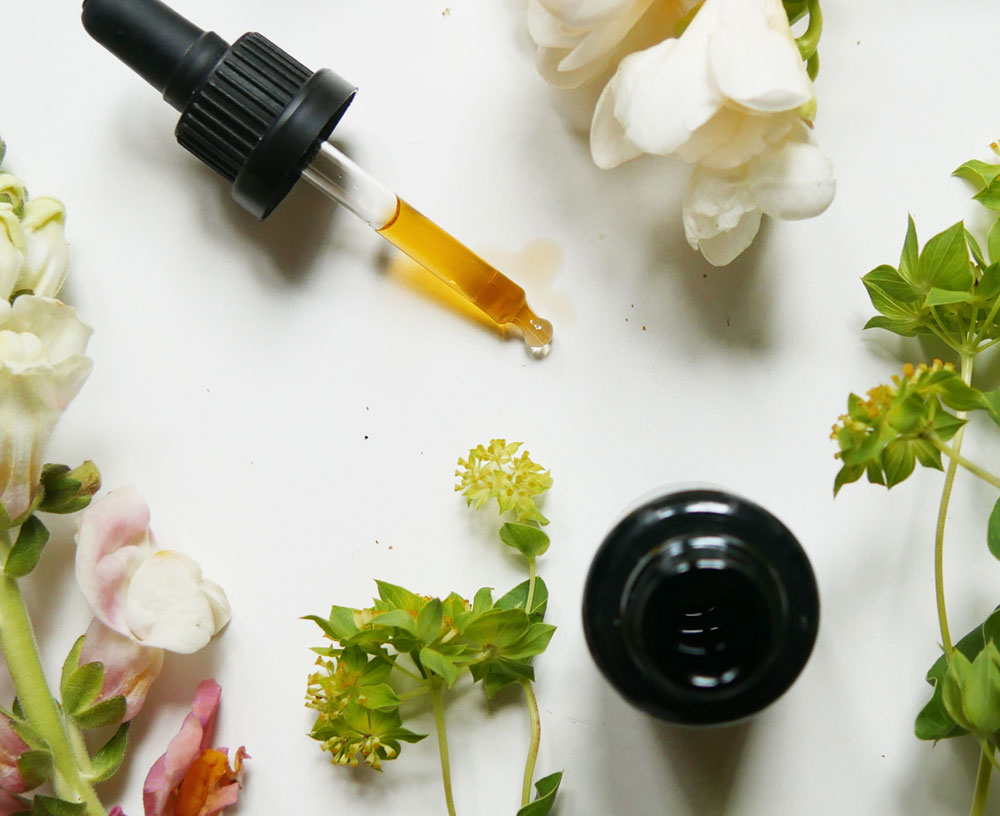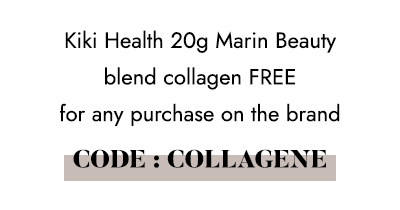Organic oil: comedogenic or not?
Rich in vitamins and essential fatty acids, organic oils nourish, balance, regenerate, soothe and even firm the skin. But beware, not all oils will necessarily suit your skin type! Combination to oily skins that are prone to imperfections should avoid comedogenic organic oils at all costs.
You will find in this file:
Is my organic oil comedogenic?
How do I know if my beauty products are comedogenic?
The Truth about Comedogenic Cosmetics
Click on the part that interests you to access it directly!

Help, the oil is giving me pimples!
Organic oils are bursting with vitamins and essential nutrients with multiple benefits. But some oils can becomedogenic, and will not benefit all skin types.
What is a comedogenic oil?
A comedogenic oil is simply an oil that, when applied to the skin, promotes the appearance of blackheads, microcysts and other pimples. The oil concerned will tend to clog the pores of the skin, promote the appearance of blemishes and aggravate acne.
Skin with imperfections and combination to oily skin is more likely to develop blackheads and microcysts following the use of a comedogenic organic oil than dry skin.
For this reason, it is essential to choose an organic face oil adapted to your skin type. Combination to oily and acne-prone skin will prefer a non-comedogenic oil of course, rich in linoleic acid to rebalance the skin and tighten pores, with a fine texture and dry finish.

Is my organic oil comedogenic?
The comedogenicity index of the oils
There is an index of comedogenicity that indicates how comedogenic (or not) an oil can be for the skin. To determine the comedogenicity index of a vegetable oil is based on 3 criteria:
- 1/ The freshness of the oil
- 2/ Its sensitivity to oxidation. An oil oxidizes naturally in contact with air, light and heat, which leads it to become rancid after a while: the smell and texture are altered, and it no longer delivers the same benefits. Organics oils are more or less fragile and sensitive to oxidation depending on their composition. Any oxidized oil is potentially comedogenic. An oil that oxidizes faster is therefore more likely to be oxidized.
- 3/ The speed at which it penetrates the skin. The thicker the oil is and the longer it takes for it to be absorbed by the skin, the more likely it is to clog pores and promote the appearance of imperfections.
Beware the quality of the organic oil plays a lot on its comedogenicity index, an excellent quality oil will have much less chance of causing pimples to appear. Finally, the gesture has all its importance when applying an organic oil: a few drops are enough (2 or 3), to massage on wet skin for better penetration. You can also use a jade roller or gua sha to promote the penetration of the oil.

What are the indices of comedogenicity?
The comedogenicity index of an organic oil is calculated on a scale from 0 to 5:
- Oils with an index of 0 are non-comedogenic.
- Oils between 1 and 2 are not very comedogenic.
- Oils between 3 and 4 are comedogenic.
- Oils with an index of 5 are very comedogenic.
List of comedogenic and non-comedogenic oils
As soon as you are in doubt about an organic oil, refer to this table and you will know right away if it is suitable for your skin according to the comedogenicity index:
| OIL | INDEX | OIL | INDEX | OIL | INDEX |
| Apricot | 2 | Guava | 1 | Palm | 4 |
| Argan | 0 | Granda | 1 | Peach pits | 4 |
| Arrachide | 2 | Grape seeds | 1 | Prickly pear | 0 |
| Avocado | 0 | Hazelnut | 0 | Pumpkin seeds | 2 |
| Babassu | 0 | Hemp | 0 | Raspbeery seeds | 1 |
| Baobab | 0 | Jojoba | 0 | Rice bran | 0 |
| Borage | 2 | Kalahari melon | 0 | Rosehip | 1 |
| Brocoli | 1 | Karanja | 2 | Safflower | 1 |
| Cajeput | 1 | Kukui | 2 | Sea buckthorn | 2 |
| Calendula | 1 | Linen | 4 | Strawberry seeds | 1 |
| Calophylle | 2 | Macadamia | 2 | Seeds of chia | 3 |
| Camellia | 0 | Mango (butter) | 0 | Sesame | 1 |
| Camelina | 0 | Marula | 1 | Shea (butter) | 0 |
| Carrot | 1 | Moringa | 2 | Soy | 1 |
| Castor | 1 | Musk rose | 3 | Sunflower | 0 |
| Coconut | 4 | Mustard | 3 | Sweet Almond | 2 |
| Cotton | 3 | Neem | 1 | Tamanu | 2 |
| Cucumber seeds | 1 | Nigella | 1 | Walnut | 2 |
| Evening primrose | 2 | Olive | 2 | Wheat germ | 5 |
How do I know if my cosmetics are comedogenic?
When you buy a product that contains a blend of organic oils or a cream, ask about its comedogenicity.
Apart from organic oils, there are other potentially comedogenic ingredients such as:
- mineral oils
- film-forming agents such as silicones, quaternary ammonium, polymers, etc.
- certain sunscreens, including chemical filters and those containing nanoparticles
- animal waxes: beeswax and lanolin
- some red dyes
For your convenience, all products in the online store are assigned a comedogenicity index.
Click on "Comedogenicity? Learn more" to discover our recommendations for each product.
There are 3 possibilities:
- non-comedogenic: this means that the product does not contain any comedogenic oil or ingredient, or only organic oils with a comedogenicity index of 0
- not very comedogenic: the product contains oil(s) with a comedogenicity index of 1 or 2 maximum, therefore considered not very comedogenic, it does not present a particular risk of clogging the pores with a good use and conservation.
- potentially comedogenic: the product contains one or more potentially comedogenic ingredients such as coconut or wheat germ oil, beeswax, cocoa butter etc.... It is therefore possible that it is not suitable for combination to oily or acne-prone skin, but beware there is no absolute truth: the balance of the formula, the quality and freshness of the ingredients play an important role, and it should not be forgotten that each skin reacts differently.

The truth about comedogenic cosmetics
As we have seen above, the notion of comedogenicity is calculated on a scale. Thus certain products cannot be regarded as not comedogenic strictly speaking because their index is not at zero, but can be very little comedogenic and thus without risk to make buttons (as long as they are applied correctly of course).
When it is a formula combining several active ingredients, the comedogenicity will depend on the dosage of each ingredient and the synergy between them (so do not panic if you spot a potentially comedogenic oil at the end of the composition for example). This careful dosage is all the work of a formulator, as well as sourcing quality oils and ingredients and ensuring their optimal conservation.
Finally, it cannot be repeated often enough, but each skin is different, for example some mixed to oily skins tolerate very well coconut oil, which is considered comedogenic, because it also has interesting antibacterial virtues.
Do not hesitate to ask us all your questions on the subject below, we will answer them with pleasure :)
Comments





Léa the 05.06.2020
L\'ingrédient caprylic/capric triglyceride est présent dans la majorité des produits bio. Est-il comédogène? Car il me semble qu\'il vient de la noix de coco. Merci!
Il s'agit d'huile de coco sous forme fractionnée, elle n'est pas comédogène sous cette forme :)
Je vous souhaite une belle journée !
Marsha the 16.04.2020
Comment rendre une huile moins comédogène ? En mélangeant des huiles végétales?... par exemple argan (indice 0) et rose de musquee (indice 3).
Vu que l\'huile deviendrait plus fluide pourrait-il correspondre a une peau Grasse mature a imperfections?
Merci
Car je cherche une synergie d\'huiles
Il vous faut en effet mélanger des huiles non comédogènes entre elles. Sinon, nous proposons une large sélection d'huiles visages non comédogènes, sur notre site, et adaptées à votre type de peau. Il vous suffit de choisir la sélection Huile Visage, puis dans les filtres, sélectionner formulation non comédogène et peau grasse :
https://www.moncornerb.com/fr/19-huile-visage/s-8/formulation-non_comedogene
Bonne journée !